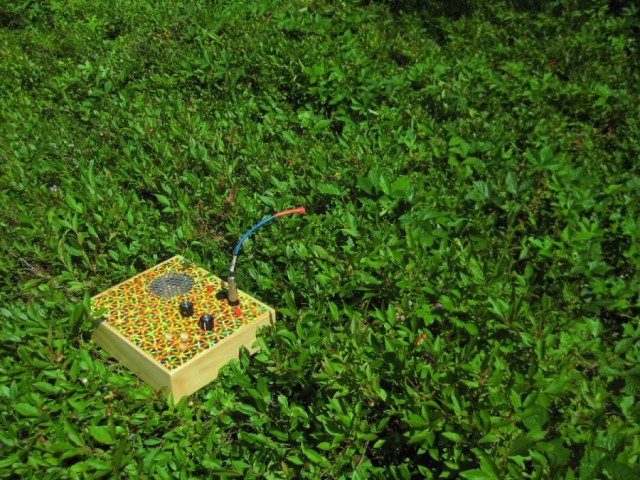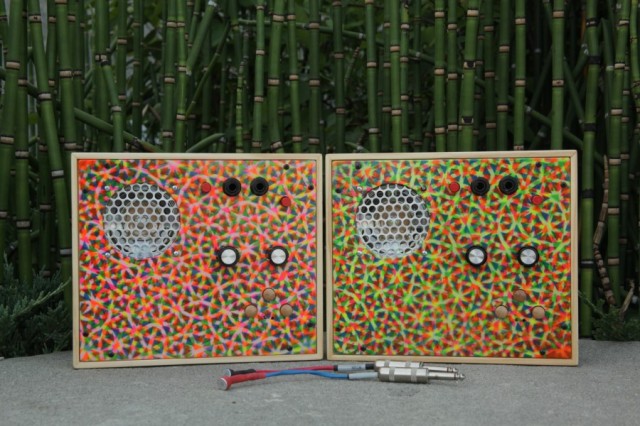In a week awash with new music gadgetry, Kaleidoloops are a reminder of the electronic musical object at its most basic. It’s a box for collecting and making sounds.
The Kaleidoloop contains basic digital audio recording capabilities – 16-bit / 22,050 Hz mono WAV. You can now save those recordings on an SD card, with up to 32,000 tracks and – if you upgrade beyond the paltry included 256M card – hours of sound.
What makes it interesting is its simple controls for manipulation. Knobs control speed and direction, and you can switch the speed control between a continuous mode and one that steps along the harmonic series. Buttons let you select tracks. There’s a built-in speaker and mic, or you can opt for 1/4″ input and output. And you can layer tracks together, too.
None of this is innovative; buying a Kaleidoloop is like buying a trawl or a hoe. It’s a basic tool you’d always expect to use.
It’s the simplicity of the thing, combined with an artful case, that makes it worth mentioning. The art collective Dearraindrop has given it a gorgeous skin, lending an almost mystical quality to the object.
Since these are handcrafted, the price of US$299 isn’t entirely unreasonable. But whether you buy this, or rescue a tape recorder, or build your own hardware or patch, I think just looking at it is a good reflection. It’s a way of reminding ourselves that what we do in production is work with sound. And getting back to basics is never a bad idea.
Or, as the makers suggest:
“Use several devices to build up layers of sound, pass a sound from one to another and play with resonance, invent new musical games, practice speaking in reverse, alter playback speed and explore new harmonies, carry sounds around the room… the list is endless. Best of all the Kaleidoloop stores everything it records, so you have a collection of your sound journey.”
http://www.critterandguitari.com/content/kaleidoloop
Like bright colors? Want to see other projects? Look here:
http://www.critterandguitari.com/projects

